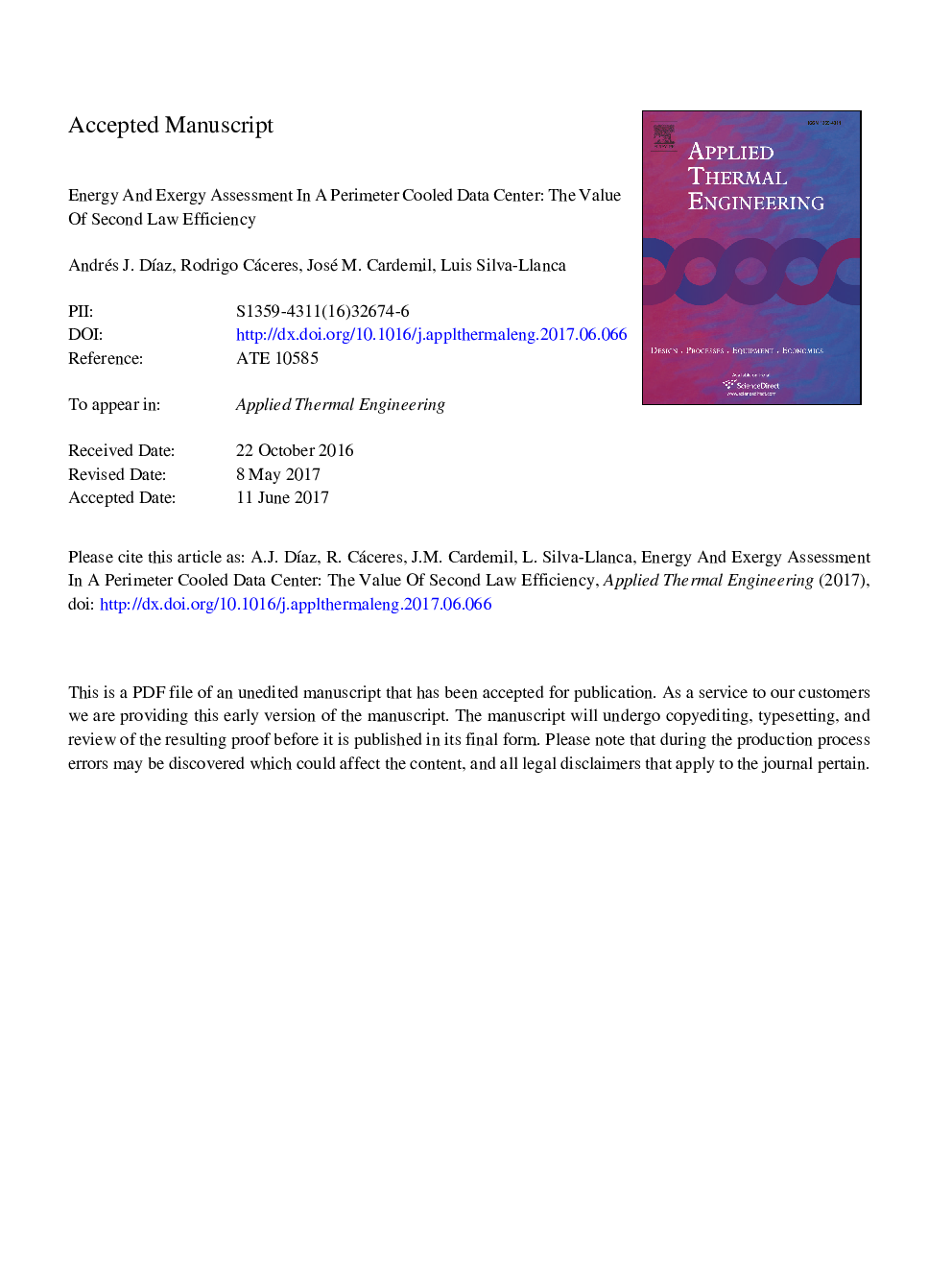| Article ID | Journal | Published Year | Pages | File Type |
|---|---|---|---|---|
| 4990666 | Applied Thermal Engineering | 2017 | 35 Pages |
Abstract
The Data Center Industry remains in steady growth with worldwide energy consumptions in the order of hundreds of TWh, and yearly growth rates higher than the growth of global electricity consumption. Electronic cooling represents an important part of a Data Center's energy demand, thus efficient thermal management practices have become critical in recent years. The Coefficient of Performance (COP) appears as the most commonly used metric when assessing the energy efficiency of a data center, although sometimes it proves insufficient to address irreversibilities in a system. In this work, the information provided by the COP is complemented with a second law efficiency analysis as a way to measure inefficiencies. The software Engineering Equation Solver (EES) is utilized to apply energy and exergy balances in each individual component and the global refrigeration system, simultaneously. The study considers variations in the number of active racks and the increase in hot air recirculation within the room, assuming that the approach closely represents the first years of operation. Maximum efficiencies are achieved when all racks are active and when aisle air containment prevents recirculation. Fewer active racks increase the exergy destruction, due to excessive power usage in a low demand situation. The chiller accounts for the highest power consumption with high density racks; whereas for low density racks, the cooling tower consumes most of the power. The second law analysis justifies the chiller power consumption based on its cooling requirements, and elucidates oversizing in the cooling tower power consumption. The COP increases with hot air recirculation, which could mislead the design towards inefficient decisions; the second law efficiency shows an inverse relationship with the recirculation, thus properly capturing the inefficiencies and better guiding the design. Appropriate energy efficiency analyses should consider both thermodynamic approaches (first and second law) to ensure proper use of working fluids cooling potential and maximize the system energy efficiency.
Related Topics
Physical Sciences and Engineering
Chemical Engineering
Fluid Flow and Transfer Processes
Authors
Andrés J. DÃaz, Rodrigo Cáceres, José M. Cardemil, Luis Silva-Llanca,
